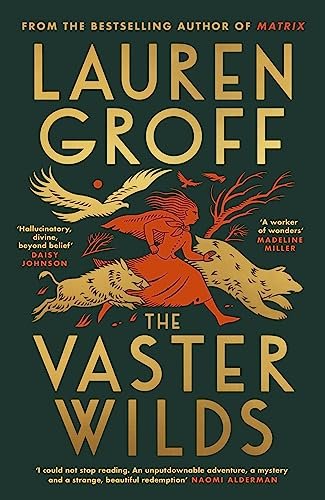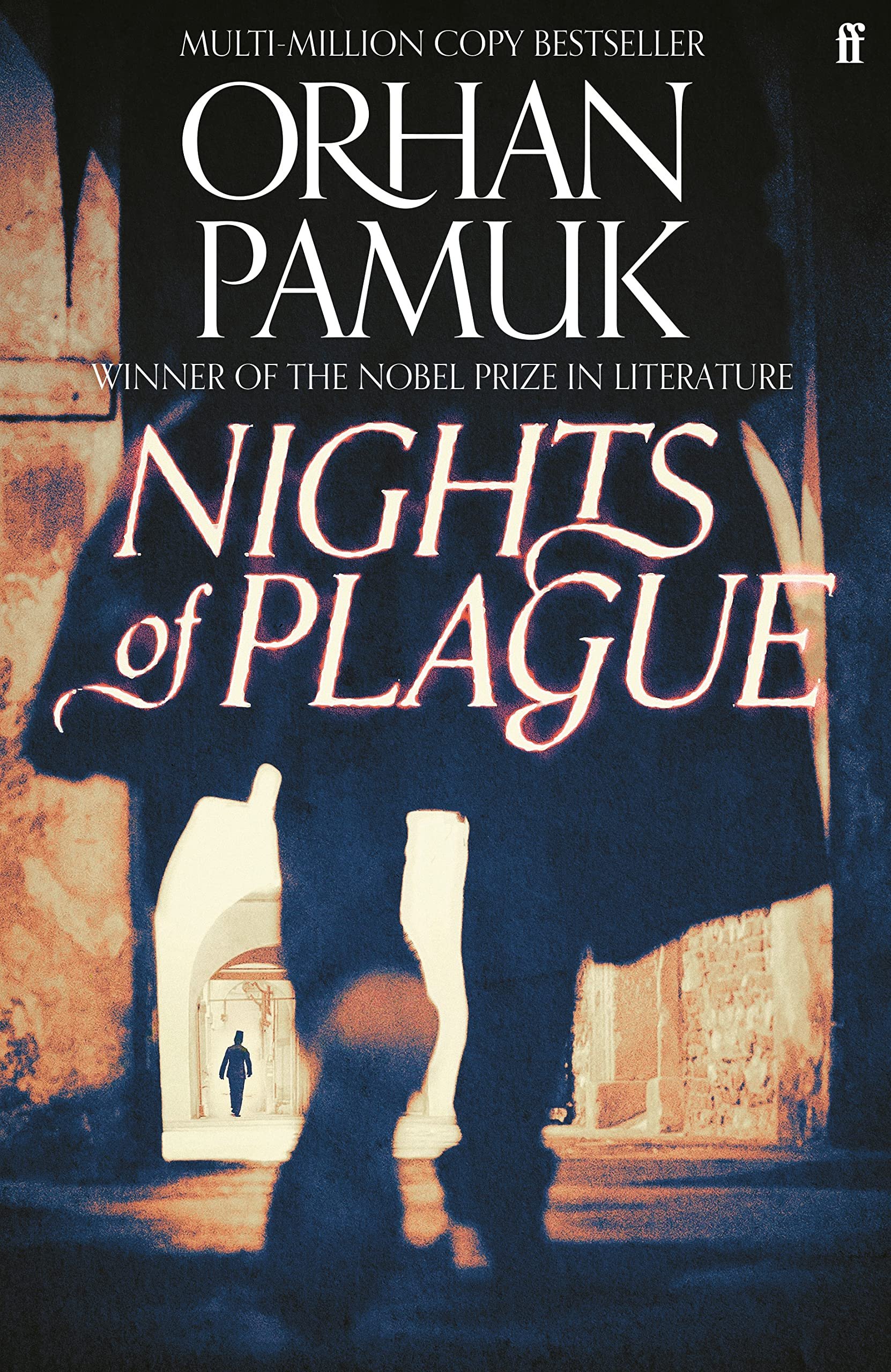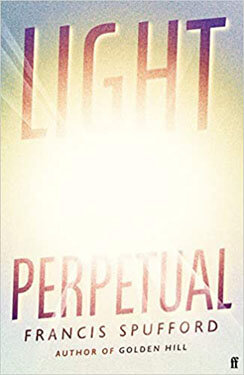Between plagues, marauders and horrific weather (destructive storms and unpredictable ice locking in the cove) I'm certainly glad I didn't live on the Newfoundland coastline in the early 1800s. The exact date when this immersive historical novel is set isn't specified but I assume it must be in this period because at one point there's an old man who still recalls the Seven Years War. It's a tough life for the inhabitants of the fictional town of Mockbeggar and not made any easier by the longstanding rivalry between siblings Abe Strapp and the Widow Caines who hold the majority shares of the mercantile businesses along this stretch of Northern land. This story doesn't shrink from depicting the violence and gruelling hardship of these inhabitants' lives and (sometimes) their abrupt deaths, but the author's atmospheric language, high drama and vivid characters were so compelling I found this novel consistently gripping.
I like that there's a Dickensian feel to Crummey's writing in depicting class strife and squalid 19th century living conditions, but also in his evocative choice of names such as Captain Deady, Mr Clinch and Solemn. In addition, many characters take on nicknames or they are referred to by their profession rather than their proper names including The Beadle, The Abbess and The Widow. I think this highlights how certain people become so defined by their roles within a community – especially such a small one as this. Since there are so many characters and some individuals are referred to by multiple names I initially worried it'd become confusing but I found following the characters and their relationships to each other fairly straightforward. There was also an unpredictable quality to the narrative since characters are prone to death even when I assumed they'd remain major figures throughout the story.
Given the difficulty of surviving in this location the inhabitants certainly don't need the added stress of Abe and the Widow's petty competitiveness and squabbling which subsequently has an effect on all the lives and livelihoods of the entire community. I found it very easy to believe this would happen because growing up in my hometown in Maine there were two factions of a prominent family whose business decisions negatively impacted the community and were detrimental to the economy – all because there was a longstanding family rivalry. I like how the depth and history of the Strapp sibling's conflict is gradually revealed over the course of the novel. At first The Widow seems like a good person because she is so capable, intelligent and provides work for some of the younger members of the community who are in need. However, her scheming nature gradually reveals itself especially through the mistrust she engenders from those around her and we eventually witness instances of her cutthroat nature. She seems to especially arouse a mistrust in other women. Though I think she is ultimately villainous I was very drawn to her as a character for the idiosyncratic way she dressed in her late husband's distinctive clothes, her forthright manner and her determination to become successful despite the odds. However, I'd certainly never want to meet her in real life!
Abe is more immediately damaging in his truly heinous actions and reigns as a tyrannical figure of the community. It's infuriating that he gets his way in being assigned the role of Justice of the Peace. There couldn't be a more ironic title for him since there is nothing just in his behaviour. He stirs up conflict and causes destruction at every opportunity. Though he's truly monstrous I think it's believable because there are people who are unrelentingly glutinous and outright selfishness. It's also sadly plausible that someone like this can retain his power though he's totally incompetent at doing anything but retraining his power. He does this through intimidation and taking advantage of his position selling goods to the community on credit at exorbitantly high interest rates. He exploits the easiest ways to make more money through selling alcohol, gambling and running a prostitution business. Despite his power and success he always seems to be discontent and miserable throwing tantrums. Since he so often gets his way it was truly satisfying whenever there's a rare instance where he's undermined or humiliated. Unfortunately Abe usually keeps the upper hand and he gleefully exploits, abuses and kills whoever he wishes. Given his horrific actions and nature I couldn't help hoping throughout the story he'd become a victim of vigilante justice or become a casualty of his own incompetence.
Perhaps because of the harsh conditions and competitive nature of this world there are few truly good characters in this novel. The exceptions are teenage siblings Solemn and Bride as well as a reformed young man named Lazarus. There's an interesting dynamic between this trio especially in Solemn's unspoken desire for Lazarus and the way Solemn strategically plans to maintain a closeness to him. It's poignant when historical novels can highlight how gay (or potentially gay) individuals such as this existed in the past but their sexuality was often necessarily hidden or actively left out of historical records. I found Lazarus to be one of the most fascinating and dynamic characters in the novel because he undergoes such a transformation of identity. He arrives in Mockbeggar as a criminal/indentured servant who is sexually sold to enable the older criminals to gamble. But his intelligence and kindness are fostered so he develops into a productive member of the community. I enjoyed the close-knit relationship between these three younger characters however, I found it a bit saccharine that they quote the bible to each other all the time. I know this is a common language/connection between them but to me it made their relationship less dynamic.
“The Adversary” is a sort of sequel to Crummey's previous novel “The Innocents”. I've not read this other book and from watching interviews with the author about this novel I know he describes the books as mirrors of each other because their stories occur concurrently but in different areas of Newfoundland. There's a brief reference to children in a different cove whose parents have died and who are struggling to survive. These are the protagonists of “The Innocents” and there are some characters in “The Adversary” who appeared in that earlier novel but mostly in more minor roles. Crummey describes that first book as a play upon the Adam and Eve story. Similarly “The Adversary” is obviously a play upon the Cain and Abel story. It's fascinating how Crummey transposes the conflict of this biblical tale to Newfoundland. There are a number of great interviews online with Crummey discussing this newer novel, but one I'd especially recommend is one with Kobo because I think it's enlightening how he discusses the environment and history of the region: https://www.youtube.com/watch?v=XGRgwEWULMU
I'm certainly keen to read “The Innocents” and other work by Crummey since “The Adversary” is the first book I've read by him and I think he's a fantastic writer. His style of storytelling reminds me of Joyce Carol Oates' work (which is obviously a very positive thing for me) and it also reminded me of Eleanor Catton's “The Luminaries”. It's also interesting learning from interviews with Crummey that the character of Abe was based on a real historical figure from Newfoundland's history named George Ryder. Ryder engaged in many of the heinous crimes and actions which Abe also commits in the novel. However, the author was also conscious that Abe's tyrannical nature has a similarity to the attitudes/actions of many despotic leaders who exist in the world today. It's poignant how this novel functions as both a fictionalisation of the past and commentary upon the present in this way – but it's also depressing knowing that such people often find ways to gain and maintain the power to oppress others. Although, more than Abe (who is simply an idiotic bully and narcissist), I was disturbed by the Protestant parish officer The Beadle who is his enabler. In addition to being Abe's godfather, The Beadle schemes to allow Abe to persist in his destructive behaviour (partly so that he himself can retain his power and income.)
Overall, I found this novel impressive and utterly absorbing. It's so atmospheric – both in the descriptions of the environment and the use of dialogue/language throughout the novel. It's striking how when some sailors arrive in the community they speak in a markedly different way from the natives. It may be crudely childish of me, but I enjoyed how there were so many creative/funny terms for insults, conjugal relations and sexual anatomy throughout the book. It provides some light relief to the more gruesomely violent scenes. However, these creative turns of phrase also indicate the wit of so many people from the past whose lives weren't recorded in any other way. The story is filled with so many memorable and compelling characters including midwife Mary Oram. Locals are suspicious/wary of her but many rely on her medical know-how. There are also so many intriguing plot points in this novel that I felt consistently engaged. So I'm really glad to have discovered this new-to-me author through it being shortlisted for the Dublin Literary Award.






















